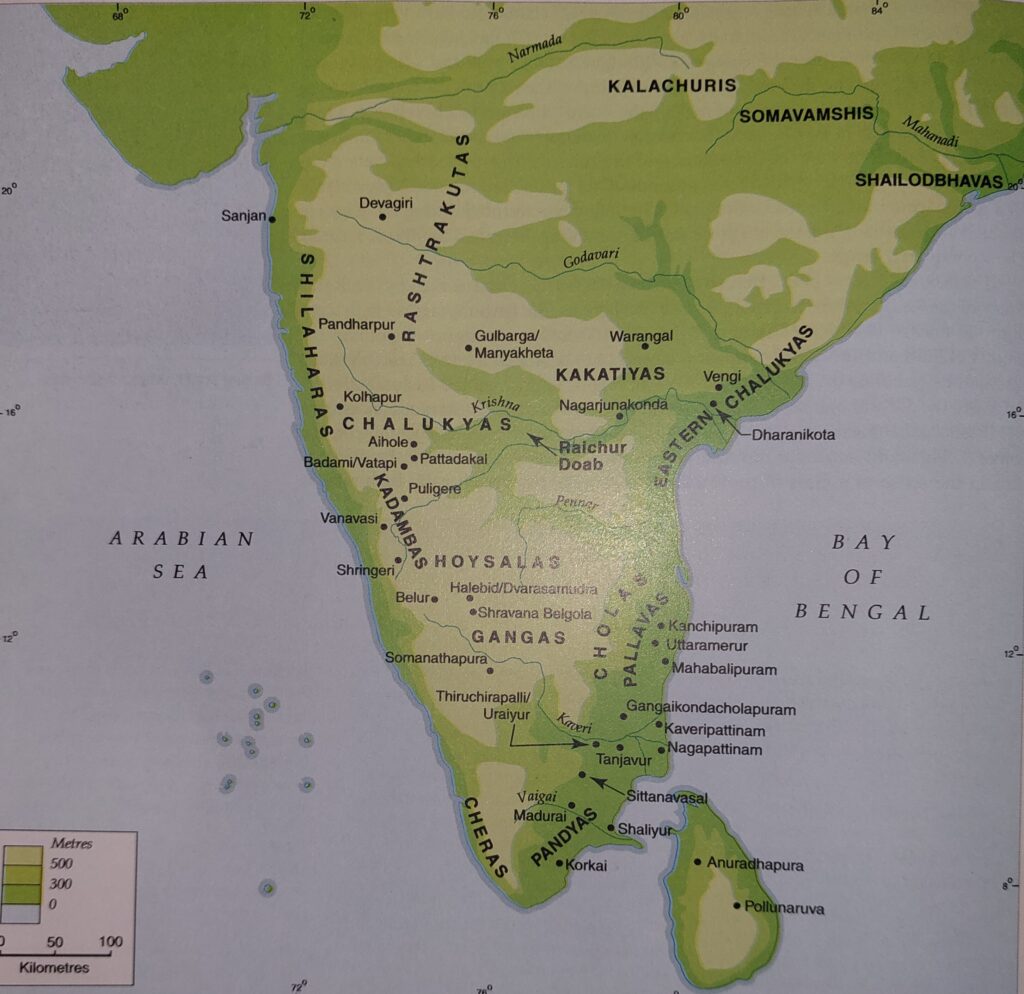Early Medieval Age society by Harsh
After the fall of Guptas as a major power in North India, the new regional principalities emerged in Indian subcontinent. The early Medieval denotes an intermediate period between the ancient and medieval period of Indian history. This period was roughly from 6th century AD to 12th century AD. These regional principalities issued number of land grants.
There was significant development made in rural society. The administration of South-Indian states was quite different from the North-India and also contains the element of decentralization in the administration system.
Also Read : Early Medieval Age – Rajput Clans
Early Medieval Age – Eastern India, Kashmir and North-Western India
Feudal System (Samanta System) of Early Medieval India
Early Medieval Age – Sources and Political Narrative & Structure
Royal Land Grants
The incidence of grants by kings was increased significantly during the period c. 600 AD – c. 1200 AD. Brahmadeyas (land gifted to Brahmans) had a political significance. Later, the Brahmadeyas become the symptom of political fragmentation. The grants of land were associated with royal kings and land as having been gifted as Dakshina for the performance of certain rites for kings.
Brahmana donees were connected with royal courts as priest, astrologer and administrator. They also migrated and got settle on the granted lands. In Chola empire, Brahmadeyas were given the status of Nadu (locality) and they enjoyed independent jurisdiction. The majority of tax grants were not only tax-free but even they can collect revenue from their assigned lands. The grants were even made hereditary in later period. Brahmadeyas played significant role in spread of temple-oriented religion in India.
Rural society: Regional Specificities
The general term used for villages in early Medieval was Grama and Pataka in Bengal and Bihar. Vastu (homestead lands) formed the core of the village settlements. The boundaries of villages were marked by rivers, marshy lands, tanks, cattle paths and banyan tree and adjoining villages. The grants of Palas mentioned the Puroga who was the village leader or village chief.
The terms Mahattara or Mahattama can be referred to village elders of heads. The term Kutumbin was used for farmers. The rice cultivation was the most important activity in agricultural villages. Irrigation played an important role in the expansion of agriculture in early medieval Rajasthan. Tanks and wells were main sources f artificial irrigation. The Persian wheel used in early Medieval Rajasthan is a matter od debate but they mentioned the term Araghatta.
Noria was a water lifting wheel. The main crops of Rajasthan were rice, wheat, barley, jowar, millets and moong. Oilseeds and sugarcane were cash crops. During the 12-13th century, large number of tanks, stepwells, wells, were constructed by rulers, nobles and merchants. Chaulukyas of Anahilawada built irrigation department.
Administrative Structures of South Indian States
The early medieval states of South-India were not so powerful and they were not a centralized power as well. Chola inscriptions mentioned the Brahmana Purohita and Rajaguru. The Pallavas and Cheras had a council of ministers and they were referred as Mantrins (ministers). The other functionaries included the Adhikari, Vayil Ketpar and Tirumandira-olai.

Udaiyan, Velan and Muvendavelan were the general terms used for land owners. The officials at Nadu included Nadu-vegal, Nadu-kakani-nayakam, Nadu-kuru and Kottam-vagai. The administration of these states also indicates the elements of hereditary in official appointments.
Cholas has a large land revenue department consisting of several officials. The assessment and collection of land was undertaken by corporate bodies such as Ur, Nadu, Sabha and Nagaram. During the 11th century, Rajaraja initiated massive project of land survey and assessment and divided the empire in units called Valanadus. After Rajaraja, the revenue department was known as Puravu-Vari-Tinaikkalam or Shri Karanam.
The term Kudimai was used for labour services. The Antarayam was rural tax realized in cash. There was some sort of standing army which was recruited and maintained by the state. Senapati and Dandanayakam were important military officials. There was royal court of justice known as Dharmasana but the day-to-day justice was handled by Sabha. There was caste-based division of labour and occupational specialization.
Rural Society
The basic unit of rural area was Ur. They were responsible for holding the village assemblies. Vellanvagai villages were the non-Brahmadeyas villages. There were certain rights given to the village members. There was socially and spatially segregated group of Paraiyar who were ritually impure. Vellalar was the cultivating group, were Shudras but they were economically powerful.
They owned lands and huge wealth; the status was as high as of Brahmans. The Karnataka inscriptions mentioned villages headed by women. The right of possession of land was known as Kani rights. Nadu was the basic unit of tax collection. It was basically an assembly of locality (Kottam was Nadu in region of Pallavas and Pandyas). The members of Nadu were known as Nattar who played significant role in revenue, irrigation and donations.
Urban Processes

The market or commercial centres were known as Nagarams that connected mainly with the production and exchange of commodities. A Nadu could have one or more than one Nagarams. The Nagaram had a corporate body consisting of merchants, members of which known as Nagaratta. Nagarakkani was the land manager in the Nadu.
Kanchipuram located in a major cotton-growing region; hence majority of weaving centres were also in Tanjavur and south-Arcot. Brihadeshwara temple, Kudamukku and Palaiyarai were also important urban centres of trade and merchants. Nageshvara temple was a centre of betel nut or areca nut cultivation. Mamallapuram was emerged as a major port outlet.
Thus, the early medieval age witnessed number of important changes in rural society and southern states also.

Pingback: Early Medieval India – Religious Spheres - historylover.in